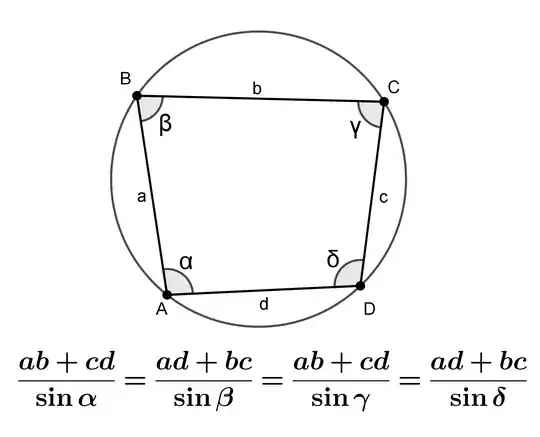I have been exploring possibilities with the Half Angle Formulas for almost two years (maybe not the ones you have in mind, see link below) and it never ceases to amaze me. Yesterday, playing with the version for a cyclic quadrilateral, I found this extension of the Law of Sines. The proof is pretty simple, but let's be honest, did you know about it? Because I do not. Every day I am more convinced that the HAF are as or more fundamental than the Law of Cosines or the Pythagorean Theorem, which, incidentally, can be derived from them. I hope they will soon enjoy the same popularity.
In a convex cyclic quadrilateral the interior angles are formed by line segments that are the sides. By making $d = 0$, not only the side $d$ disappears, the angles $\alpha$ and $\delta$ also disappear forming another angle, and leaving $\beta$ and $\gamma$. So from the relation of the image you take the terms that contain $\beta$ and $\gamma$: $(ad + bc) / \sin\beta = (ab + cd) / \sin\gamma$. Making $d = 0$, the expression reduces to $bc / \sin\beta= ab / \sin\gamma$, finally, multiplying both terms by $1 / b$ you get $c / \sin\beta = a / \sin\gamma$, which is the Law of Sines for a triangle.
Link: https://geometriadominicana.blogspot.com/2020/06/another-proof-for-two-well-known.html
Any reference?
